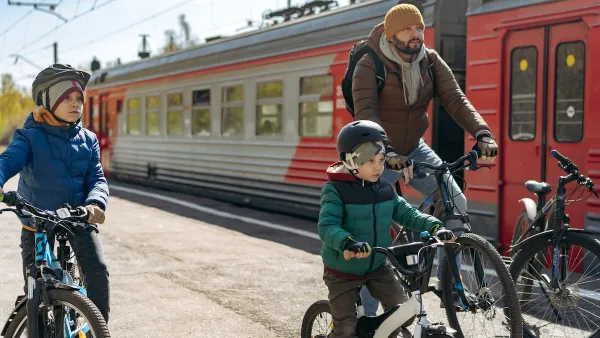Eric Jaffe examines research on just what it is that makes people walk faster in New York than, say, Fargo, North Dakota.
If you've ever had a creeping suspicion that city dwellers seem a little more frenetic on foot than their small-town counterparts, it turns out there's ample research to back it up.
According to Jaffe, "Most work on urban walking speed dates back to 1976, when psychologists Marc and Helen Bornstein published a provocative paper linking "pace of life" with population size. The Bornsteins found that people in Brooklyn (pop. 2.6 million) walked more than twice as fast as people in Itea, Greece (pop. 2,200), and posited that hurrying one's gait was a natural response to overcrowding, to reduce "social interference."
In 1989 and again in 1999, however, other researchers set out to support an alternative explanation: that population is merely a surrogate for the true determinant of walking speed, economic success. Both studies found that "pace of life" indicators were significantly higher in cities located in countries with high GDP and purchasing power parity.
Jaffe offers the following summary of their explanation: "When a city grows larger, wage rate and cost of living increase, and with that the value of a resident's time."
In addition to economic considerations, Robert Levine's 1999 study found individualism to be a strong "social predictor of walking speed."
Levine's work is discussed in an animated lecture by Philip Zimbardo for the Royal Society of the Arts.
FULL STORY: Why People in Cities Walk Fast

Analysis: Cybertruck Fatality Rate Far Exceeds That of Ford Pinto
The Tesla Cybertruck was recalled seven times last year.

National Parks Layoffs Will Cause Communities to Lose Billions
Thousands of essential park workers were laid off this week, just before the busy spring break season.

Retro-silient?: America’s First “Eco-burb,” The Woodlands Turns 50
A master-planned community north of Houston offers lessons on green infrastructure and resilient design, but falls short of its founder’s lofty affordability and walkability goals.

Test News Post 1
This is a summary

Analysis: Cybertruck Fatality Rate Far Exceeds That of Ford Pinto
The Tesla Cybertruck was recalled seven times last year.

Test News Headline 46
Test for the image on the front page.
Urban Design for Planners 1: Software Tools
This six-course series explores essential urban design concepts using open source software and equips planners with the tools they need to participate fully in the urban design process.
Planning for Universal Design
Learn the tools for implementing Universal Design in planning regulations.
EMC Planning Group, Inc.
Planetizen
Planetizen
Mpact (formerly Rail~Volution)
Great Falls Development Authority, Inc.
HUDs Office of Policy Development and Research
NYU Wagner Graduate School of Public Service



























